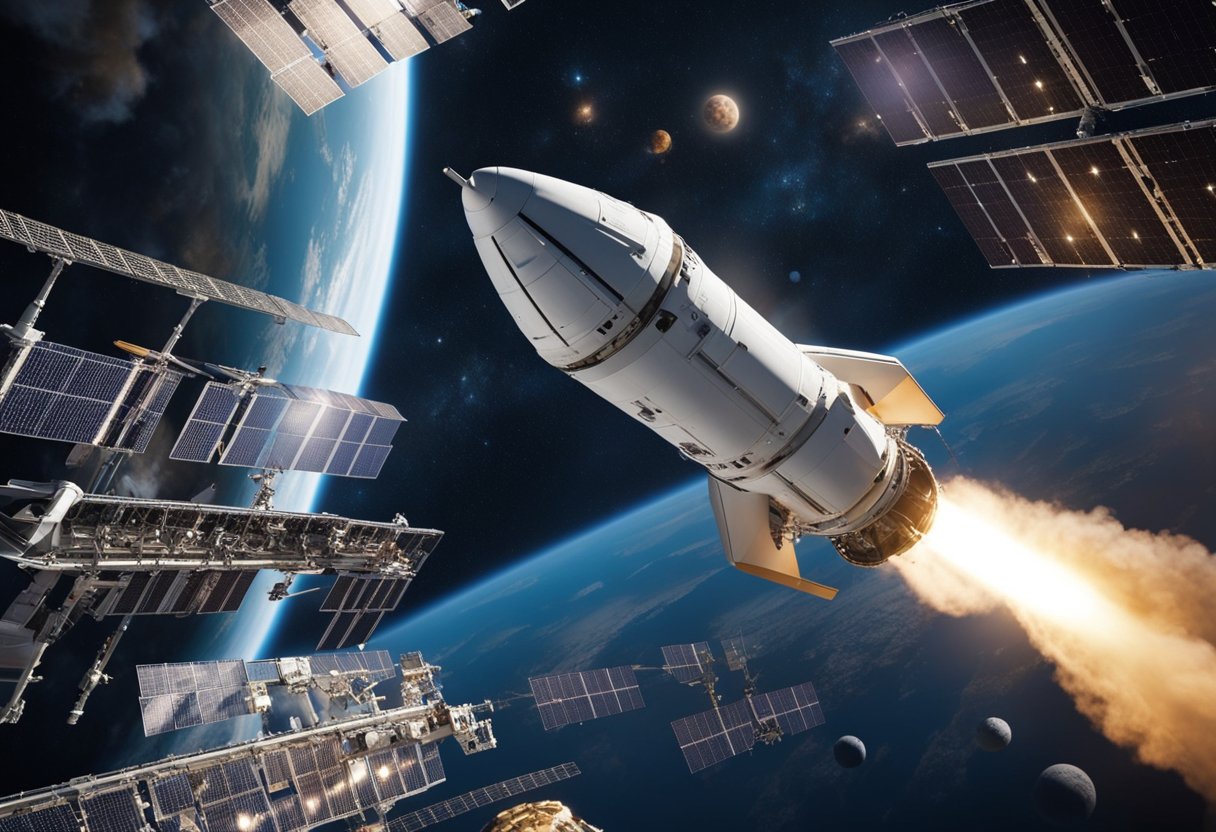
Embarking on educational space journeys offers a unique opportunity to enhance our understanding of science, space exploration, and the vast cosmos that surrounds us. As we explore the realms beyond our Earthly confines, we foster a greater appreciation for the universe and our place within it. Engaging with this awe-inspiring domain not only propels our scientific knowledge forward but also ignites the imaginations of learners of all ages. It’s through such experiences that we unite education and adventure, making learning about space an exhilarating endeavour.
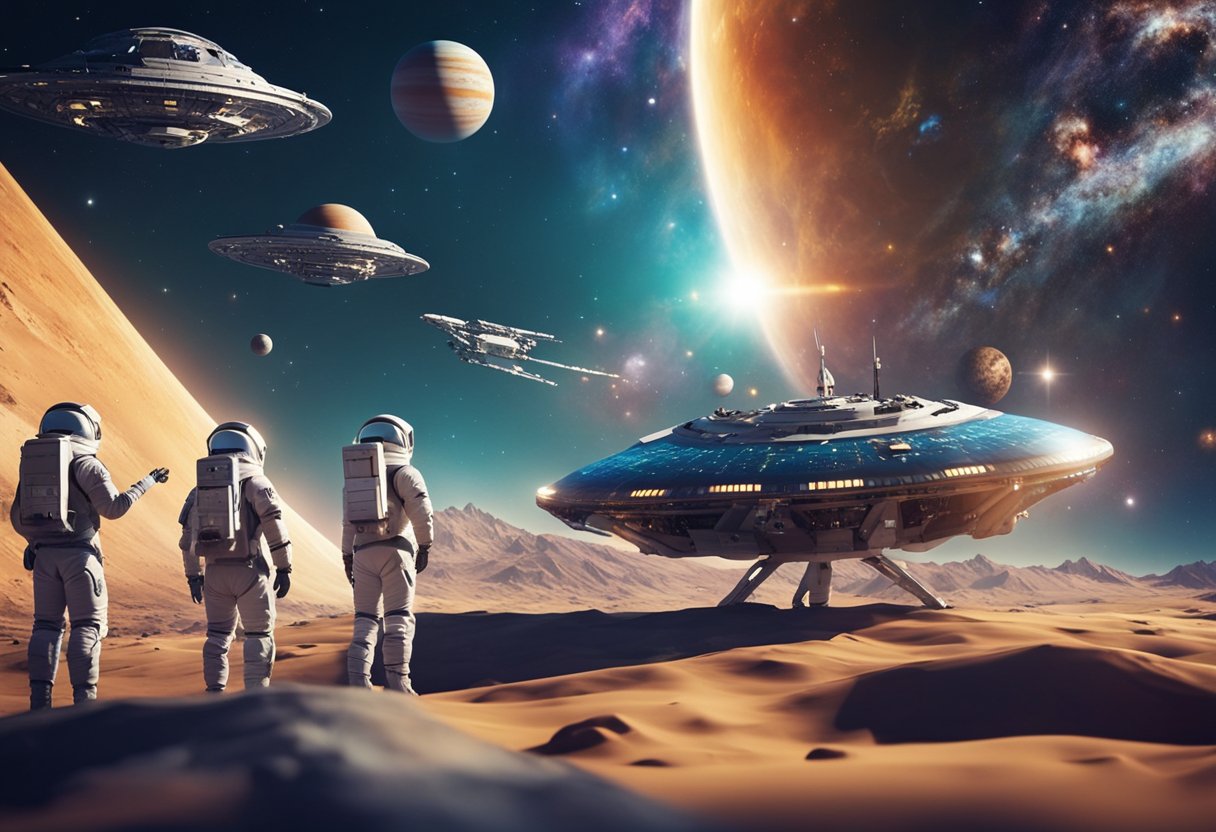
By integrating space themes into our curricula, we instil a robust foundation in science, technology, engineering, the arts, and mathematics (STEAM), utilising humanity’s spacefaring experiences as a rich context for learning. From historical feats in space exploration to the latest advancements in space technology, the stories of our endeavours beyond Earth’s atmosphere serve as powerful case studies in educational settings. The future of space travel and education is intertwined, shaping the roles and responsibilities in space education and cascading its impact across various other disciplines. As we look to the stars, we not only dream of distant worlds but also bring back valuable insights that have the potential to drive innovation and inspire future generations.
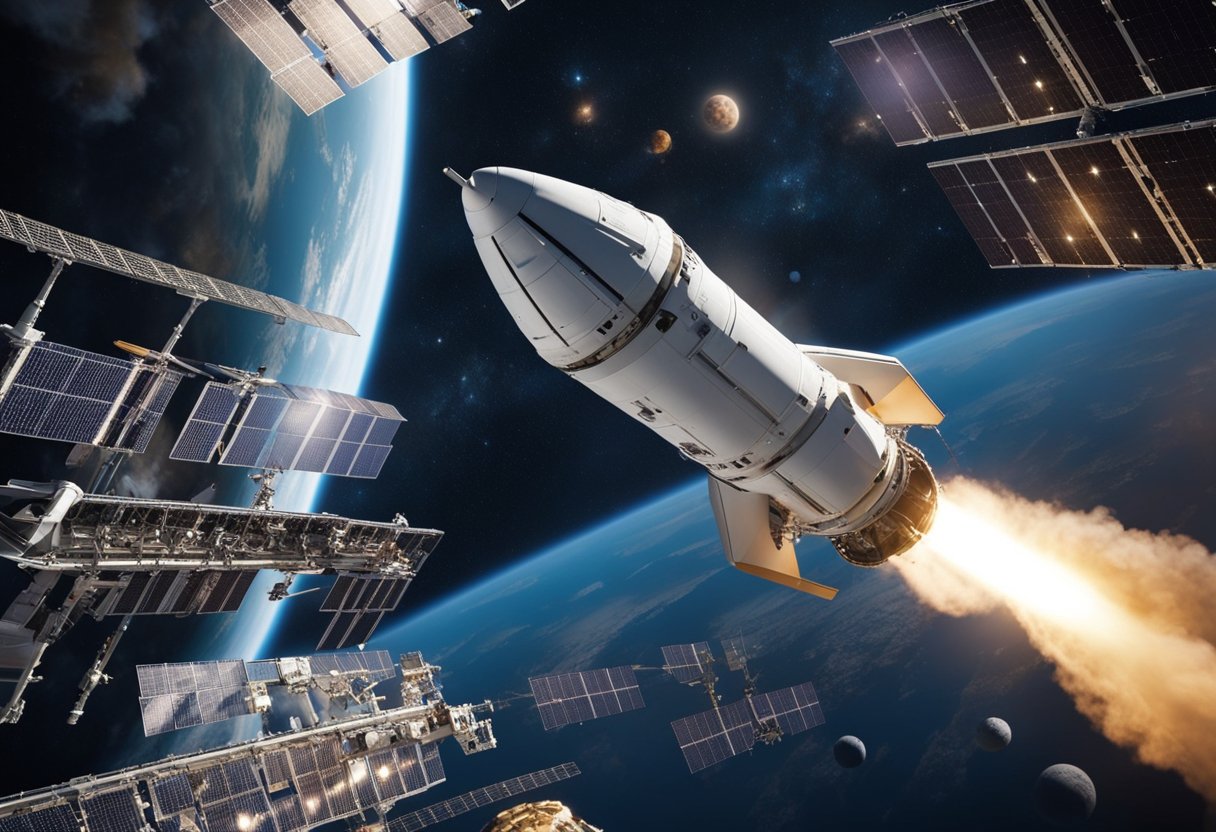
Space Education plays a crucial role in shaping the minds of young learners, preparing them for a future where space exploration is not just science fiction, but a realm filled with real possibilities and opportunities.
We find that space education has a unique capacity to inspire wonder and nurture natural curiosity in students. The vastness and mystery of space encourage students to question, imagine, and explore beyond the limits of our planet. By discussing topics such as the potential of space tourism, educators can stimulate the inquisitive nature that is essential in young minds.
Space education directly contributes to the enhancement of STEM (Science, Technology, Engineering, and Mathematics) skills amongst students. Hands-on activities, such as analysing satellite data or designing simulations of space missions, fortify practical knowledge and problem-solving abilities. These are essential skills that benefit not just prospective scientists, but all students.
Our commitment to space education opens up a spectrum of career prospects for students in the space sector and beyond. Teachers play a pivotal role by informing students about these opportunities and guiding them on paths that include aerospace engineering, astrophysics, or even roles in emerging space industries such as space tourism. The investment in these educational pursuits ensures a well-equipped workforce ready to meet future challenges.
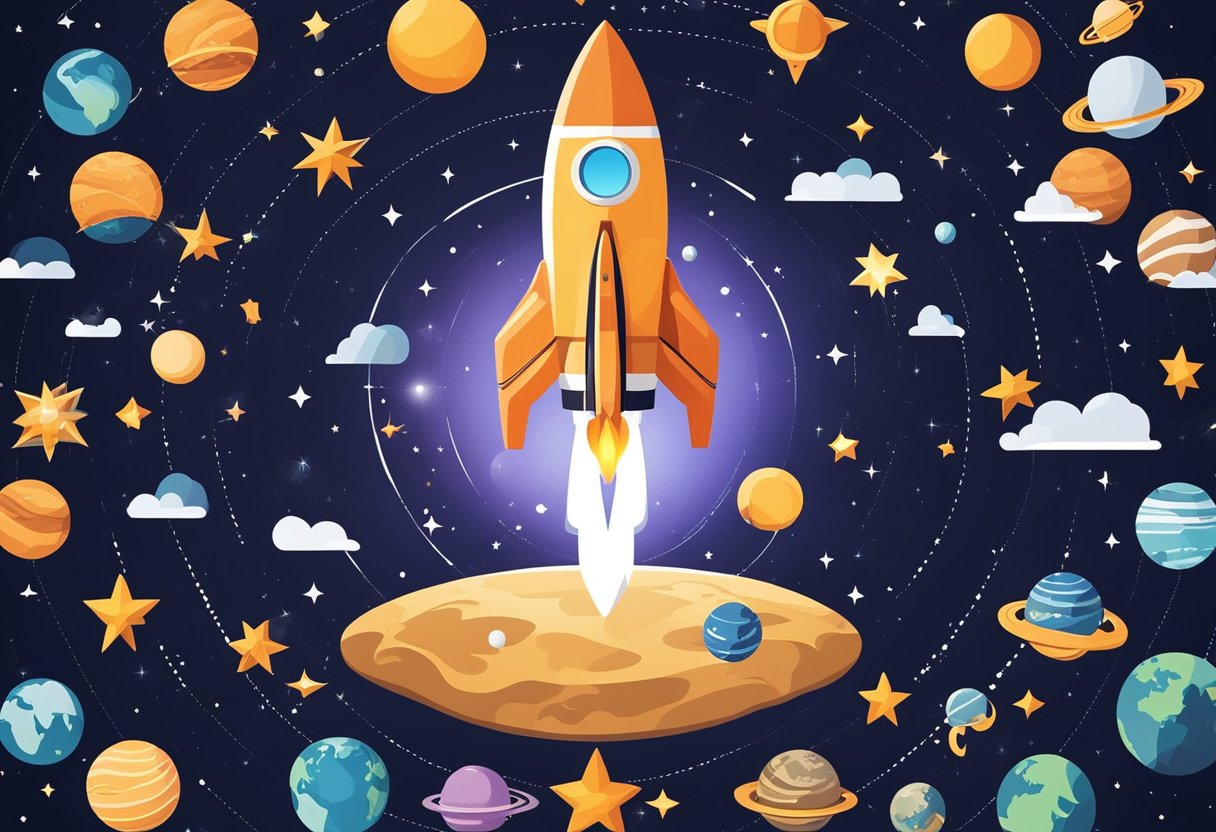
We recognise the importance of space education and its role in inspiring the next generation of scientists, engineers, and explorers. The following programmes articulate a clear vision for space education, pairing academic foundations with the exhilaration of space discovery.
NASA’s educational programmes offer a wealth of resources spanning from primary school students to postgraduate learners. By embracing a wide array of STEM topics, the agency provides unique opportunities to engage with space exploration through interactive lessons and real-world applications. This educational palette hopes to stimulate critical thinking and inspire pursuit of space-oriented careers.
In line with Artemis missions aiming to land the next astronauts on the Moon, our outreach endeavours are integral for cultivating interest in lunar exploration. Through Artemis programmes, we offer various educational tools that focus on the technologies, science, and objectives tied to the missions, thus reinforcing the support for sustainable space exploration.
Our efforts extend beyond our borders, as we collaborate on international educational projects that inspire a global audience. Programmes such as the ones offered by the Space Foundation Discovery Centre prepare individuals across the educational spectrum, fostering an international community of knowledgeable supporters and potential contributors to space programmes.
The exploration of space has always fuelled human ingenuity and curiosity, leading to monumental educational strides. Here, we examine the roles and contributions of major space agencies and organisations that have pioneered educational initiatives.
NASA has been at the forefront of integrating space adventures into educational curricula, recognising the importance of inspiring the next generation. Their International Space Station-enabled Educational Opportunities programme has been pivotal, partnering with agencies worldwide to share best practices and foster interest in space. Our leadership in this arena cements a commitment to nurturing scientific literacy and enthusiasm amongst students globally.
The European Space Agency (ESA) harnesses Europe’s space programme to educate and benefit the youth. Our collaborations with ESA have underscored a shared objective, as their Education Programme sets young minds on a path to discovery, informing early career paths and contributing to societal advancement. Resources and projects from ESA reach across all age groups, ensuring a broad impact on education related to space exploration.
Private entities are increasingly pivotal in the space sector, complementing governmental efforts with fresh perspectives and resources. The Space Foundation, a formidable example, offers educational outreach and staunchly advocates for space. Efforts of such organisations, visible on their What We Do page, reinforce the ethos of cooperation and the importance of space in our collective future. We also witness the burgeoning space tourism industry through platforms such as SpaceVoyageVentures.com, demonstrating both current and imminent space experiences that are electrifying public interest and education.
We understand the importance of offering high-quality educational resources that are geared towards space education. This section details various platforms and tools that educators and students can use to explore and understand space science.
Educational platforms online provide immersive experiences that bring space education to life. For instance, Resources For Educators at the Space Foundation Discovery Centre utilise space themes to enhance students’ interest in STEAM subjects. Additionally, NASA’s For Educators page compiles STEM learning opportunities aligned with space education, suitable for both formal classroom settings and informal education environments like museums.
Structured lesson plans are foundational for educators aiming to deliver structured space-related content. NASA Learning Resources align with K-12 curricula, allowing students to engage deeply with STEM topics through the lens of space exploration. Simultaneously, the Smithsonian Science Education Centre offers a variety of K-12 Space STEM Resources that include educator guides to facilitate teaching through a space-focused framework.
Hands-on educational kits and tools are critical for an interactive learning experience. For example, NASA provides a wealth of materials through its Science Educational Resource Catalog, ranging from hands-on activities to detailed lesson plans across different grade levels. These resources are designed to ignite curiosity and aspiration amongst students by providing a tangible connection to space science and technology.
While exploring educational activities, we also recognise the emerging landscape of space tourism and how it can influence educational content. SpaceVoyageVentures.com is at the forefront, providing insights into past, present, and the potential future of space travel, serving as a rich context for educational materials and fuelling the imagination of learners of all ages.
Introducing the vastness of space into school curricula enriches the STEM (Science, Technology, Engineering, and Mathematics) learning experience. By weaving astronomy and physics into lesson plans, we can inspire students and expand their understanding of the universe.
At the elementary level, we initiate the journey into space science by explaining fundamental concepts such as the planets, moon phases, and the solar system. We craft lesson plans that stimulate curiosity through interactive storytelling and model-building. For instance, students might:
These activities incorporate mathematics in a practical way, allowing students to measure distances and sizes, developing their numeracy skills.
As students progress, we introduce more complex topics that intertwine astronomy and physics. This includes the study of gravitational forces, light years, and celestial movements. Our lesson plans typically feature:
Project-based learning is an excellent way to delve deeper into space science. It encourages students to engage in hands-on activities that involve research, design, and implementation. Here are a couple of projects we incorporate:
We stay abreast of the latest developments in space travel and exploration, integrating resources from cutting-edge ventures like SpaceVoyageVentures.com to inform our students about ongoing and future space tourism opportunities. This link to current events makes the learning experience more tangible and relatable.
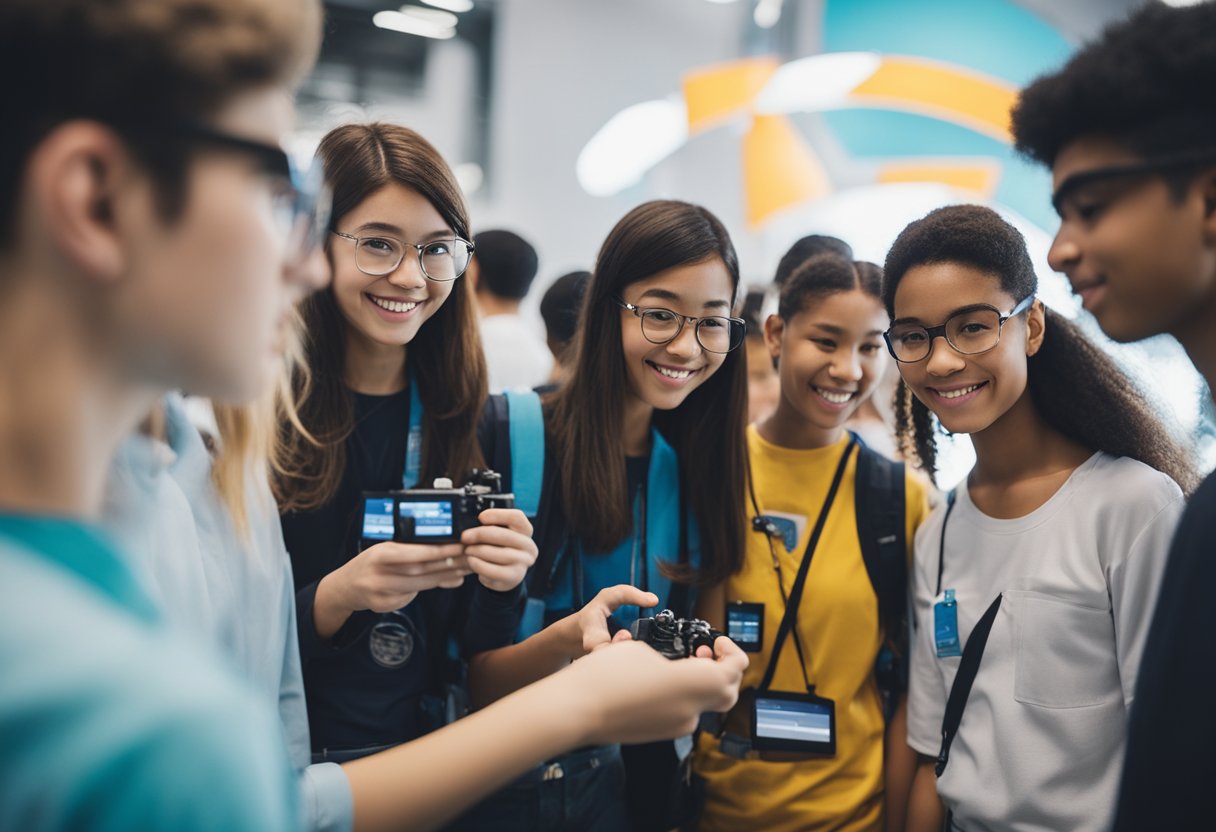
In our pursuit of inspiring the next generation, we utilise a variety of interactive events that make learning about space both educational and thrilling. These events allow us to connect with space in a way that traditional classroom settings cannot offer.
Witnessing rocket launches first-hand is a transformative experience that ignites our passion for space exploration. Our programmes provide opportunities for students and enthusiasts to observe these awe-inspiring events. Watching rockets such as the SpaceX Falcon 9 or the NASA Space Launch System (SLS) soar into the heavens offers an unparalleled educational activity that also serves to reinforce key scientific concepts in an exciting real-world context.
We support and promote space camps and competitions, which are fantastic avenues for immersive learning. At these camps, attendees engage in activities like constructing and launching model rockets, conducting simulated space missions, and even meeting astronauts. Competitions such as the UK Space Design Challenge encourage teamwork and innovation, challenging us to devise advanced space settlement designs using current space knowledge.
Virtual reality experiences are at the forefront of educational technology, providing us with the ability to explore outer space without leaving Earth. Through virtual environments, we can walk on the Moon or traverse the red plains of Mars, all while learning about the conditions and science of these extraterrestrial landscapes. Integrating these experiences in our educational programmes helps demystify complex space concepts and stimulates interest in STEAM subjects.
In chronicling the ventures beyond Earth, we encounter the stories and technological marvels that have inspired generations and expanded our understanding of the cosmos.
The annals of space exploration are replete with momentous occasions when humanity leapt forward in our quest for knowledge. On 21 July 1969, we witnessed astronauts set foot on the Moon for the first time, capturing the imagination of millions and asserting that the celestial bodies were within our reach. The Apollo missions, particularly Apollo 11, stand as a testament to our tenacity and ingenuity, laying the foundations for subsequent lunar expeditions and the contemplation of Mars as a potential destination.
As a new chapter emerges, focused on Mars, missions such as NASA’s Perseverance rover have opened the door to in-depth geological studies and the search for past microbial life, furthering our pursuit of the Red Planet.
Our venture into the cosmos has been greatly enhanced by the Hubble Space Telescope, launched in 1990. This iconic observatory has provided an unprecedented glimpse into the universe, from the birth of stars to the unveiling of exoplanets. Its illustrious career has underscored the importance of space-based astronomy.
Joining this legacy, the James Webb Space Telescope promises to delve deeper into the universe’s history, aiming to unravel the mysteries of formation from the first galaxies to the conditions on distant worlds. With these tools, our cosmic perspective continues to expand, enriching our understanding and our curricula, as detailed on platforms like SpaceVoyageVentures.com.
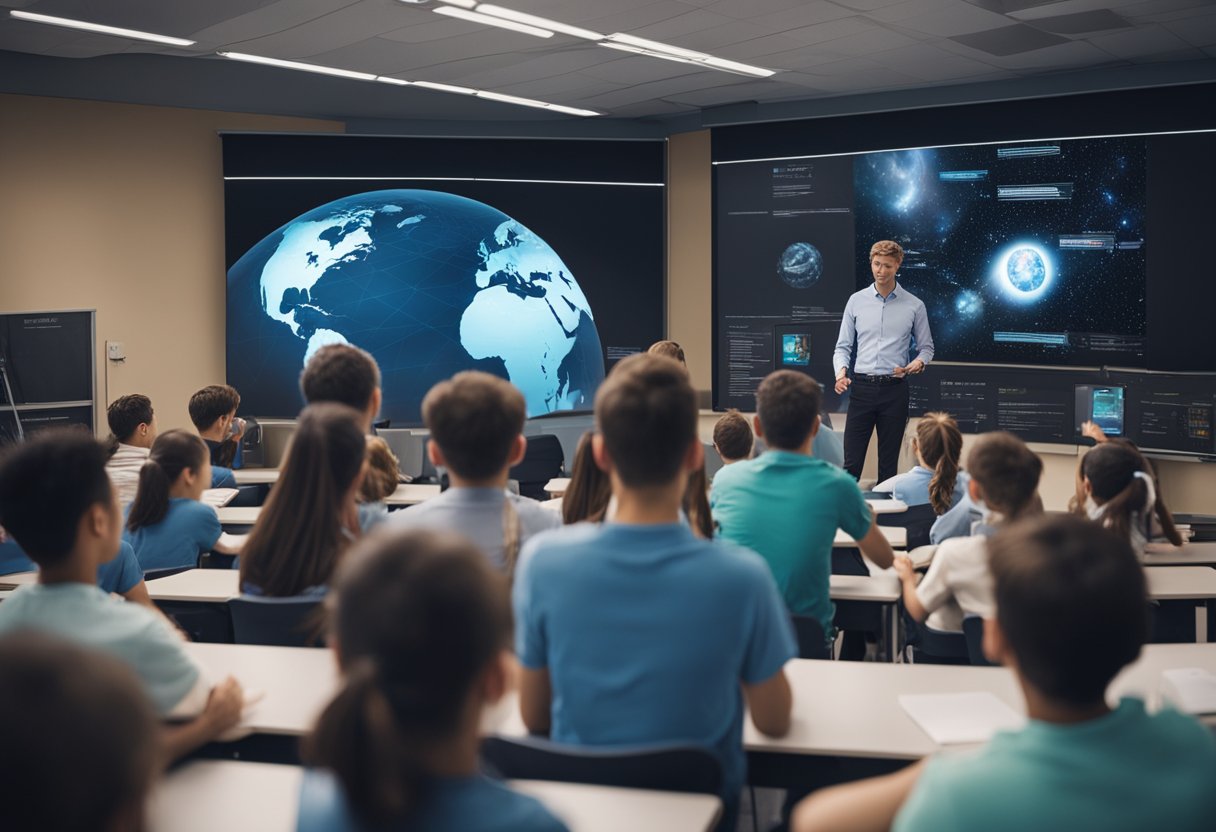
In this section, we explore the crucial role that space technology plays in enhancing educational experiences. From software that simulates celestial events to the practical application of engineering in robotics, these tools are pivotal in teaching and inspiring the next generation of space enthusiasts.
We find that software and simulation tools are integral to understanding complex space concepts. Programs like Celestia allow us to virtually navigate through the cosmos, providing an interactive experience of space exploration without leaving the classroom. Through such simulations, students can witness the mechanics of rockets and the orbits of spacecraft in real-time, which conveys a deeper understanding of celestial mechanics.
In the realm of engineering and robotics, educational programs have taken a significant leap forward with the introduction of hands-on projects. Students engage in constructing robotic replicas of rovers, which are used to simulate missions on planets and moons. This practical approach not only enhances their understanding of robotics but also cements their knowledge of various technologies used in spacecraft engineering.
By integrating space technology into our educational curricula, we provide vivid and immersive experiences that inspire future generations to pursue careers in STEM fields, fostering a deeper appreciation for the complexities and wonders of space.
In contemplating the future of space travel and education, we must consider the burgeoning role of interplanetary exploration and how it will shape our educational initiatives. Here, two prominent elements emerge: the exploration of Mars and the cultivation of a new cadre of astronauts.
The red planet has always captivated our collective imagination, and now, it stands as the next frontier for human discovery. Our sights are firmly set on Mars, where the goal is not just to land human footprints but also to establish sustainable living. The Artemis missions serve as a precursor, enriching our understanding of what is needed for prolonged space habitation. Education programmes are pivoting towards this future, integrating space travel dynamics into curricula to prepare students for the challenges that lie in Martian soil and beyond.
The evolution of education in line with space exploration necessitates a focus on producing competent astronauts. These are individuals who not only possess the scientific knowledge but also the adaptability and resilience required for such unprecedented voyages. We are witnessing a shift towards experiential learning platforms, such as those documented on SpaceVoyageVentures.com, that simulate space missions. This empowers our learners not just to grasp theoretical concepts but to apply them within realistic space travel scenarios.
By embracing these educational reforms, we are directly investing in the competence and readiness of our future interstellar explorers.
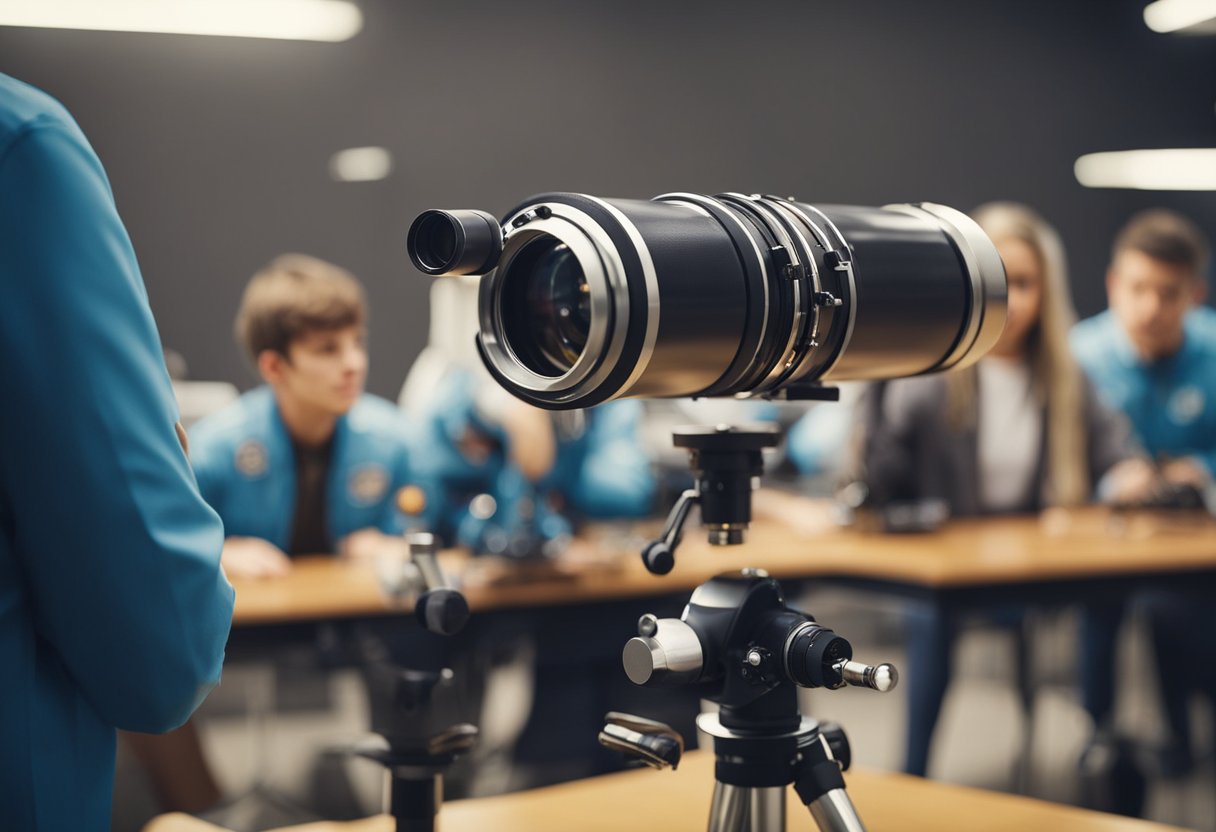
In the realm of space education, our focus is to clearly define the roles and allocate responsibilities in order to foster learning and inspire future generations. We must ensure that outreach and resources are effectively contributing to this expanding field of study and practical application.
We as educators and policymakers carry the responsibility of designing curricula that not only impart knowledge about space but also stimulate curiosity and critical thinking. We must take action to integrate space topics into educational systems, using them as a catalyst for improving students’ interest and abilities in science, technology, engineering, arts, and mathematics (STEAM). Our leadership in curriculum development and educational standards forms the backbone of a robust space education.
Moreover, we also have a duty to support continual professional development for teachers to remain abreast of the latest discoveries and advancements in space science and technology.
It’s incumbent upon us to build strong partnerships with the community and the space industry to bring real-world context into educational settings. This can manifest as providing internships, funding research projects, and offering educational resources.
Community Programs:
Industry Support:
By mobilising industry expertise and enthusiasm, we help translate complex space concepts into accessible learning experiences.
Our chief aim is to ensure that all students, regardless of background, have the opportunity to explore and be inspired by space. We actively support educational initiatives that strive for gender and cultural diversity in STEAM fields.
Through these means, we foster an inclusive environment that values every aspiring young scientist or engineer, offering them a launchpad for their ambitions in the vast arena of space exploration.
By outlining these roles and responsibilities, we lay a clear trajectory for advancing space education, immersing a diverse array of students in the majesties and mysteries of our cosmos, and perhaps inspiring some to embark upon educational space journeys.
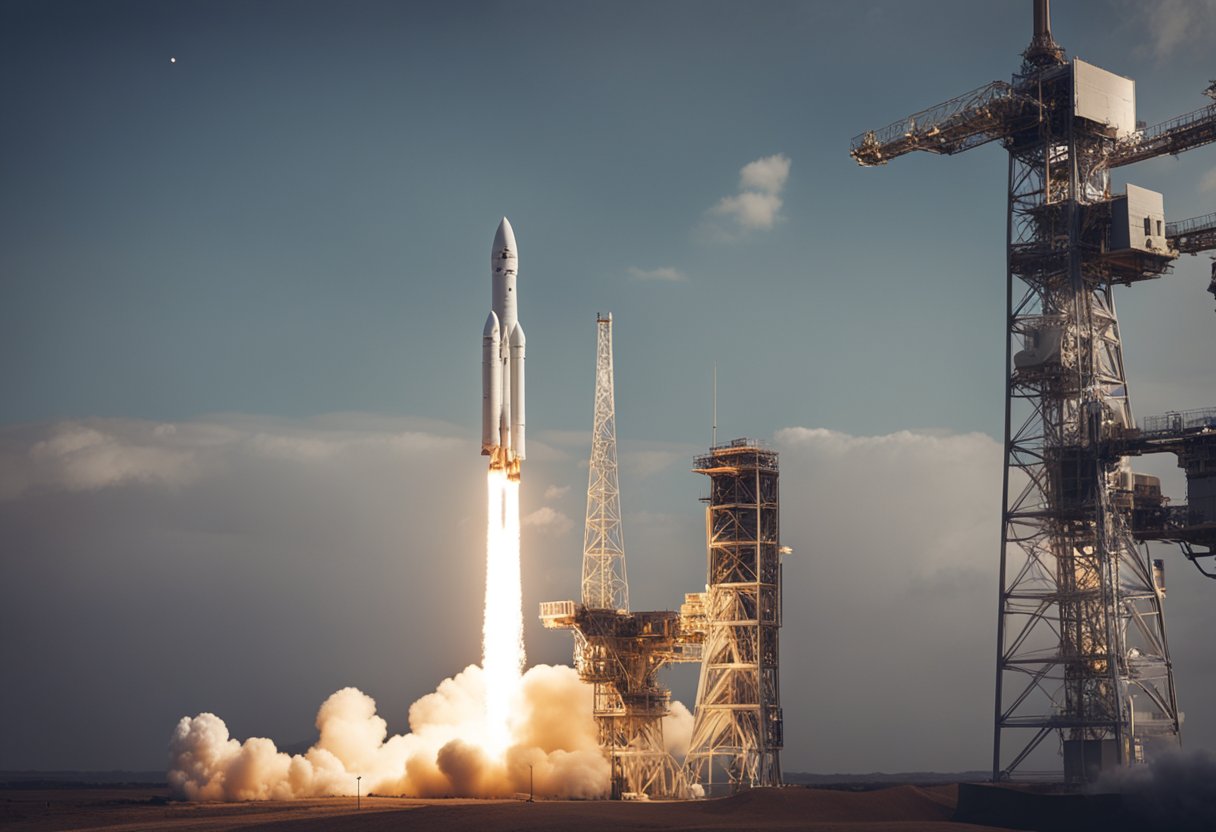
The exploration of space has far-reaching reverberations beyond the realms of astrophysics or astronomy, deeply influencing the breadth of arts and sciences. These influences manifest as cross-disciplinary integration and advancements that spur innovation and new forms of knowledge.
Our understanding of the cosmos has always stirred the pot of artistic expression. In this intersection, artists draw inspiration from the expansive universe, giving birth to extraordinary works that capture the human experience of the vast unknown. For instance, SpaceVoyageVentures.com encapsulates the very essence of this overlap—showcasing how the concept of space travel can permeate through various artistic mediums, transforming our collective imagination about the future of space exploration.
Artistic projects often employ imagery and concepts from space studies to create experiences that invite contemplation about our place in the universe. Space has become a canvas for artistic interpretation, whether through tangible mediums like sculpture and painting or through digital art, film, and literature, exposing wider audiences to the grandeur and complexities of the cosmos.
Space studies have been a catalyst for technological innovation that fuels progress across a plethora of scientific fields. Our pursuit of the stars necessitates advancements in materials science, engineering, biology, and environmental science. These technological leaps make their way into education, refining curricula and resources, ultimately enhancing our understanding of science.
The pursuit of sustainable life-support systems for astronauts has directly influenced innovations in fields such as renewable energy and efficient waste management. This research circulates back into educational settings, where students and researchers delve into improved solutions for sustaining life on Earth. Robotics, a science heavily relied upon in space missions, overlaps with medicine, as seen in the precision of robotic surgical systems—a testament to the symbiotic relationship between space tech and healthcare advancements.
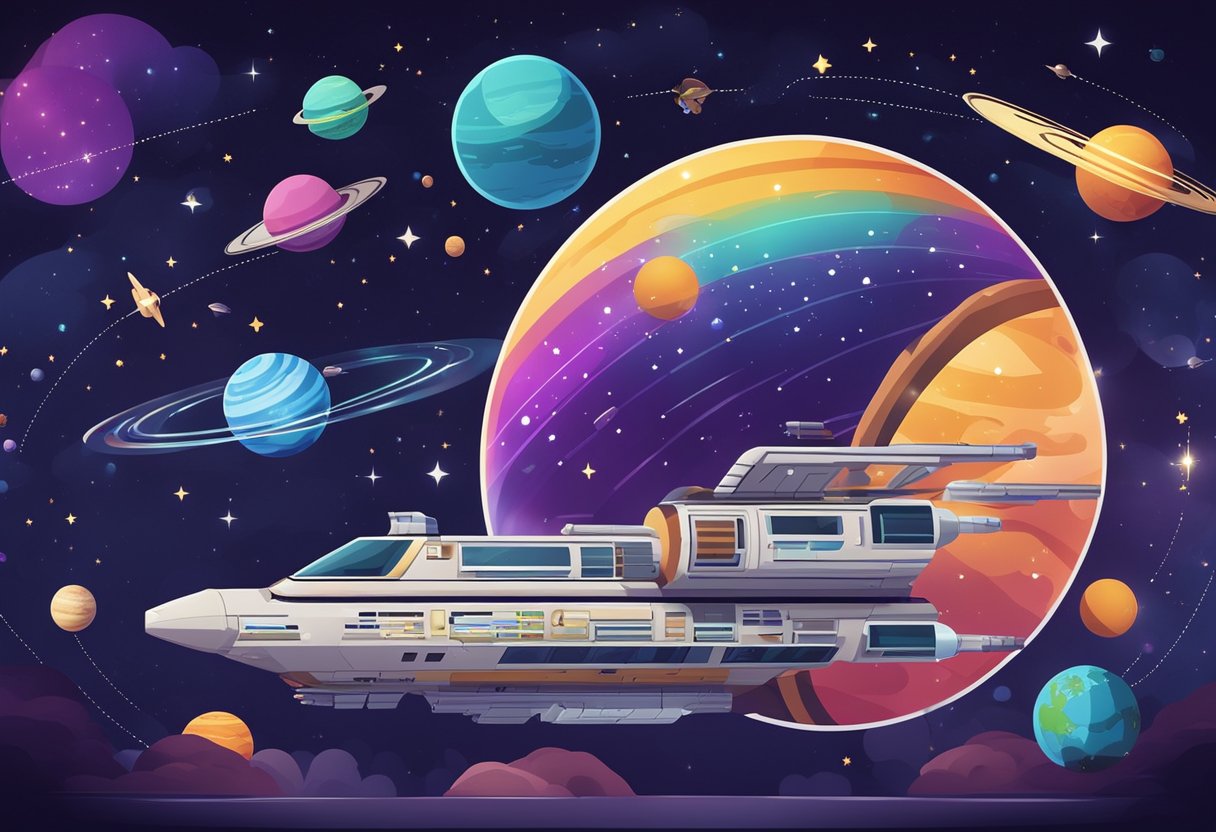
In this section, we’ll explore some of the most common queries regarding educational opportunities and experiences in space exploration.
NASA provides a plethora of educational resources for primary school children, including interactive activities and lesson plans through their NASA/JPL Edu website. This array of tools is designed to inspire and educate young minds about the principles of space travel and the science behind exploring our universe.
Adults interested in space exploration can engage in overnight experiences such as those offered by Space Center Houston, where they can immerse themselves in an astronaut’s world. Additionally, numerous online courses and webinars are available, which cover a range of topics from astronomy to space engineering.
The prospects of future space explorations are vast, promising new frontiers in scientific discovery and technology. These future missions are likely to influence educational content by incorporating the latest research and simulations into the curriculum, preparing students for careers in space science and exploration.
Engagement with NASA’s Kids’ Club offers students a captivating way to learn about NASA’s missions and space science through games and interactive learning activities. This platform is designed to stimulate interest in STEM subjects among younger students through the exciting lens of space exploration.
The academic discipline that encompasses the study of space travel is known as astronautics or aerospace engineering. This field covers the development and technology of spacecraft and the physical and biological challenges humans encounter outside Earth’s atmosphere.
Space exploration significantly impacts educational development and curriculum by constantly delivering new content and discoveries that can be integrated into STEM education. It encourages problem-solving, critical thinking, and innovative research skills, while fostering an interest in the science and mechanics of space travel.